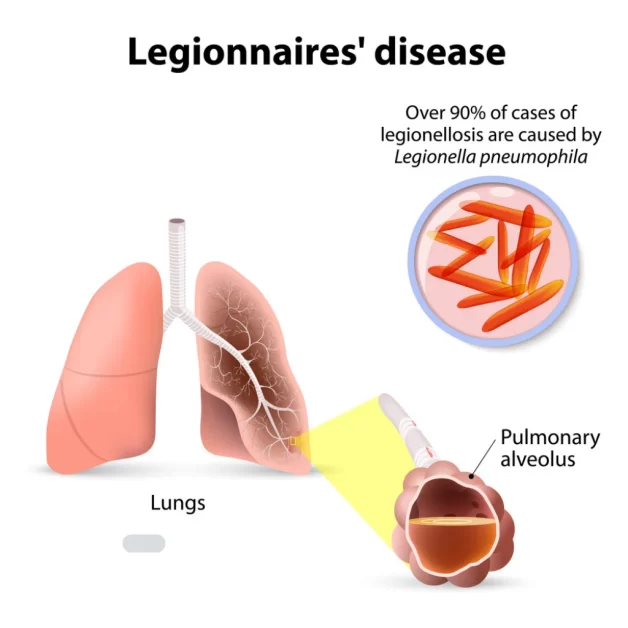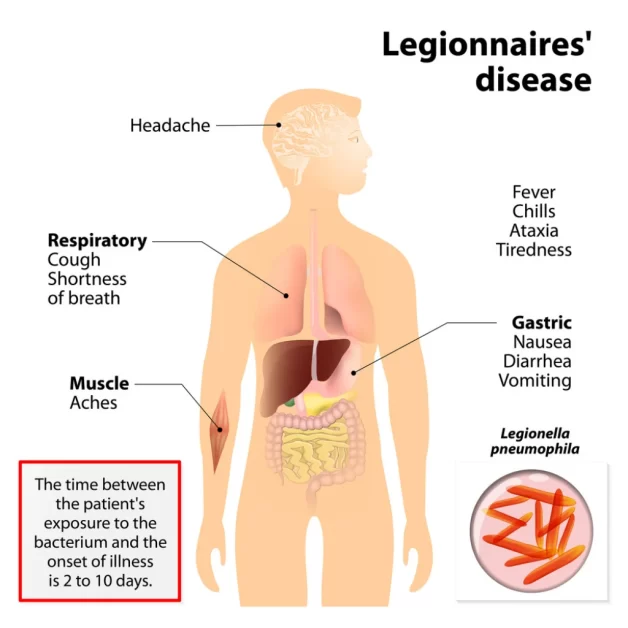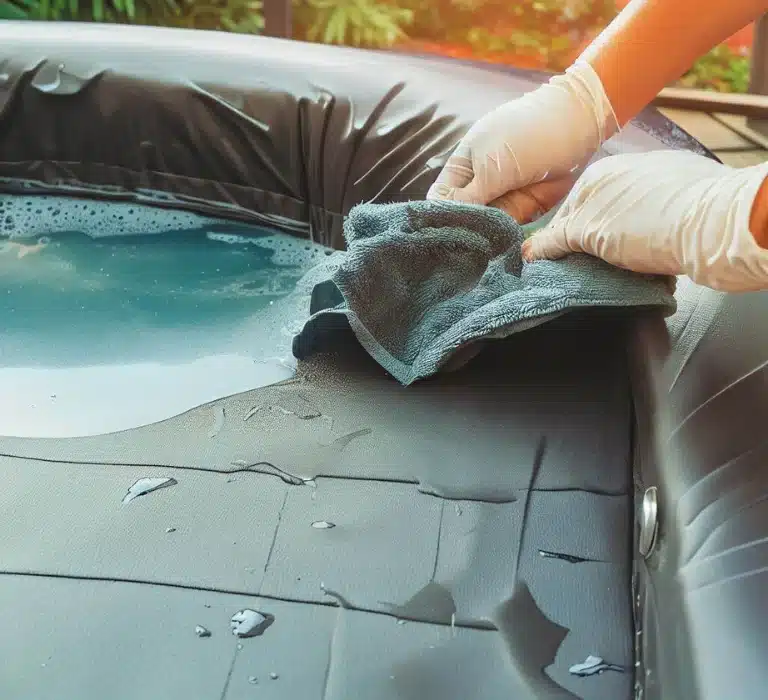Legionnaires Disease Hot Tub: A Comprehensive Guide
Discover essential information about Legionnaires Disease Hot Tub, its causes, prevention, and more in this informative guide.
Legionnaires’ disease is a severe type of pneumonia caused by the bacterium Legionella. People get Legionnaires’ disease when they breathe in small droplets of water (mist) that contain Legionella.
Legionella is found naturally in freshwater environments, like lakes and streams. It becomes a health concern when it grows and spreads in human-made water systems like hot tubs.
Hot tubs are at risk for Legionella contamination because:
- The water temperature in hot tubs is ideal for Legionella growth (77°F to 113°F).
- Hot tubs can create aerosols, or tiny water droplets, that can be inhaled.
- Legionella can survive and grow in the biofilm that can form inside hot tubs.
Legionnaires’ disease can cause a variety of symptoms, including:
- Fever
- Cough
- Shortness of breath
- Muscle aches
- Headache
- Diarrhea
- Nausea and vomiting
If you have any of these symptoms after using a hot tub, you must see a doctor immediately.
According to the Centers for Disease Control and Prevention (CDC), hot tubs have been linked to many Legionnaires disease outbreaks in the United States and other countries. Therefore, knowing how to prevent Legionnaires’ disease from your hot tub and protect yourself and others from this serious infection is important. Here are 4 tips to follow:

1. Regular Maintenance and Testing:
- Check water chemistry (pH and disinfectant levels) at least twice daily.
- Test for Legionella bacteria monthly or more frequently in high-risk settings.
- Use test strips or kits following the manufacturer’s instructions.
- Keep records of test results and maintenance activities.
2. Periodic Draining and Cleaning:
- Drain and clean your hot tub every three months or sooner if the water is cloudy.
- Steps:
- Turn off the power and disconnect from the electrical outlet.
- Soak the filter cartridge in the cleaner for 24 hours.
- Scrub the tub surface with mild detergent.
- Rinse and dry the tub surface.
- Flush pipes with a cleaning product.
- Rinse pipes and refill the hot tub.
3. Proper Disinfectants and Antifreeze:
- Use approved hot tub disinfectants (chlorine or bromine).
- Avoid household bleach or non-hot tub products.
- Use non-toxic antifreeze safe for plumbing and pets.
- Never use automotive antifreeze.
4. Cover and Secure Your Hot Tub:
- Use a high-quality, snug-fitting cover.
- Clean the cover regularly with a cover cleaner.
- Secure the cover with straps or locks.
- Protects from dirt, debris, weather, and UV rays.
- Reduces heat loss and evaporation.
Legionnaires Disease Hot Tub: An Overview
This section will provide an overview of Legionnaires’ disease and its connection to hot tubs.
Legionnaires’ Disease is a variant of Legionnaires’ disease, a severe form of pneumonia. It can be contracted when inhaling mist or water droplets containing Legionella bacteria that have contaminated hot tubs or spas.
Understanding Legionella Bacteria
Legionnaires’ disease is caused by the Legionella bacteria, which thrive in warm water environments, making hot tubs a potential breeding ground if not properly maintained.
Symptoms of Legionnaires’ Disease Hot Tub
- Flu-like Symptoms: The initial symptoms may resemble the flu, including fever, chills, and muscle aches.
- Respiratory Issues: As the disease progresses, it can lead to cough, shortness of breath, and chest pain.
- Gastrointestinal Problems: Some individuals may experience nausea, vomiting, and diarrhea.
Causes and Risk Factors
This section will explore the causes and risk factors associated with Legionnaires’ disease hot tub.
Contaminated Water
- Improper Maintenance: Failure to clean and disinfect hot tubs regularly can lead to bacterial growth.
- Inadequate Filtration: Ineffective filtration systems can’t remove Legionella bacteria effectively.
Risk Factors
- Age: People over 50, smokers, and those with weakened immune systems are at higher risk.
- Hot Tub Settings: Hot tubs at hotels or public places may have a higher risk of contamination.
Prevention Measures
Preventing Legionnaires’ disease hot tub is crucial. Here are some steps to ensure your safety.
Regular Cleaning
- Drain and Clean: Empty the hot tub and clean it thoroughly before refilling.
- Disinfection: Use appropriate disinfectants to kill bacteria.
Proper Maintenance
- Water Temperature: Maintain the hot tub at an appropriate temperature (below 104°F or 40°C).
- Filtration: Ensure your filtration system is in good working order.
Personal Hygiene
- Shower Before Use: Encourage all hot tub users to shower before entering.
- Limit Immersion: Prolonged exposure increases the risk; limit your time in hot water.

Common Queries:
Q: Can Legionnaires’ disease hot tub be transmitted from person to person? A: No, it is not contagious and is contracted by inhaling contaminated water droplets.
Q: How soon do symptoms appear after exposure? A: Symptoms typically appear within 2 to 10 days after exposure.
Q: Are there any long-term effects? A: In most cases, with prompt treatment, individuals recover fully.
Q: Can I still use a hot tub safely? A: You can enjoy your hot tub safely by following proper maintenance and hygiene guidelines.
Q: What should I do if I suspect Legionnaires in hot tub? A: Seek medical attention immediately, especially if you experience symptoms.
Q: How can I find a reputable hot tub service provider? A: Research online reviews and ask for recommendations from friends or family.
Closing Arguments:
Legionnaires’ disease hot tub is a serious health concern, but with the right knowledge and precautions, you can minimize the risk and enjoy your hot tub safely. Remember to maintain and clean your hot tub regularly, practice good personal hygiene, and be vigilant for any symptoms. Doing so gives you a relaxing and safe hot tub experience.










